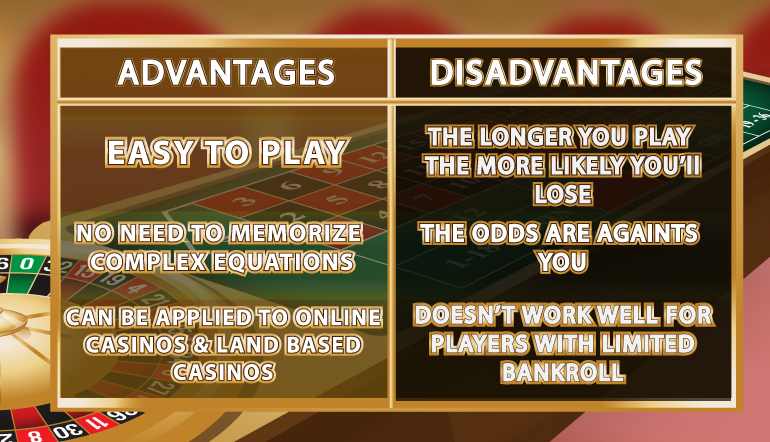Martingale is a popular negative progression Blackjack betting strategy that requires the player to gradually increase the stakes after every losing bet. Martingale, as well as other blackjack martingale variations or blackjack strategies, are not allowed in many sites. Check the casino rules first before playing your favorite blackjack variant there as you may be banned from the casino permanently if they detect that you are using strategies and betting systems at the tables. There are all sorts of 'systems' to beat blackjack, and one of the most popular is progressive betting, or martingale betting. But does it actually work? The reason casino blackjack tables have a maximum bet is exactly to counter the Martingale strategy. For example, a $10 minimum Table typically has a $500 maximum.
Strategy principles

The classic martingale is one of the oldest and most used betting systems for the simplicity of its strategy. Its simple rules has encouraged gamblers to massively use the method.
The basic principle is increasing the bids following failures so as to cover each time the amount lost. The theory is that it is unlikely to accumulate a large series of losses and that a win will eventually hapen to cover these series.
Blackjack Martingale Variations
Although the logic is attractive, the Classic Martingale is very dangerous and has led to the bankruptcy of several gamblers because the bets can very quickly reach high amounts.


Rules of the Classic Martingale
Although it can be applied to any type of betting; sports, horse racing or even in trading, the Classic Martingale is popular in casinos and especially in roulette with simple bets (red / black, pair / odd …).
Two simple rules :
- Multiply the stake after each loss. In a classic roulette game where the odds are 2, the player should double his bet after each loss.
- Return to a base bet unit following a win.
Martingale Blackjack Simulator
Example
In this example simulated on GSimulator, played Odds are 2 (US +100), probability 50% and the bet unit is $10 :
| # | Cost ($) | Result | Win ($) | Bankroll ($) |
|---|---|---|---|---|
| 1 | – 10 | + 10 | 10 | |
| 2 | – 10 | 0 | 0 | |
| 3 | – 20 | 0 | – 20 | |
| 4 | – 40 | 0 | – 60 | |
| 5 | – 80 | 0 | – 140 | |
| 6 | – 160 | + 160 | 20 | |
| 7 | – 10 | + 10 | 30 |
- In this example, the martingale is triggered from the second iteration following a loss.
- The gambler doubles the bet following each loss until the next win. In this example, after the sixth round, the player recovers all of his last losses 10 + 20 + 40 + 80 = $150, in addition to winning a base bet unit 150 + 10 = $160.
- In this example, $160 were necessary to gamble and win only $10. If the sixth shot was a loss, you would have had to bet $320 the next round!
Benefits and risks
The promise of the Classic Martingale is a steady gain through the coverage of losses. Mathematically, it seems that the player can continue to win indefinitely! But because of the exponential rise of the bets following a large series of losses, the amount to bet can reach very high sums leading to the bankruptcy of the gambler. In the example above and in the case of a set of 15 losses, the player should advance $10 x (32768) = $327680, 32768 is the result of doubling the bet by 2 each time, 4 then 8, 16, 32, 64 …
It is possible to limit the frequency of losses by playing small odds in sports bets for example (football, basketball, baseball, hockey, tennis …), but paradoxically the profit will be lower.
Another very important limitation is that casinos and sports betting sites impose limits on maximum bets, even if the gambler has a very high or unlimited bankroll, he will find himself stuck with this limitation and will not be able to cover big losses.
GSimulator
The apparent simplicity of the martingales hides a complexity and a subtlety due to the multitude of parameters that can spectacularly change the results, the number of repetitions, the available bankroll, the amount of bets and especially the odds… GSimulator allows to generate a gambling-weighted random distribution, calculates the results, and provide tools to analyze and understand the behavior of betting systems in different situations.
Start a free simulation of the Classic Martingale strategy in the GSimulator or consult the documentation for more informations.
Other betting systems
Other strategies and betting systems exist and try to limit the losses, or to increase the profit, by making changes to the rules of betting following the losses (negative progression) or following the wins (positive progression) :

- Great Martingale
Increase stake + unit bet, after every loss - Fibonacci (Whittacker)
Increase and decrease stake based on the Fibonacci sequence - Reverse Martingale (Paroli)
Increase stake after winning until stop limit - d’Alembert
Increase stakes after a loss, descrease after a win - Contra d’Alembert
Increase stakes after a win, descrease after a loss - Labouchère
Remove first and last number in the Labouchere sequence after a win, add the last bet to the sequence after a loss - Reverse Labouchère
Remove first and last number in the Labouchere sequence after a loss, add the last bet to the sequence after a win